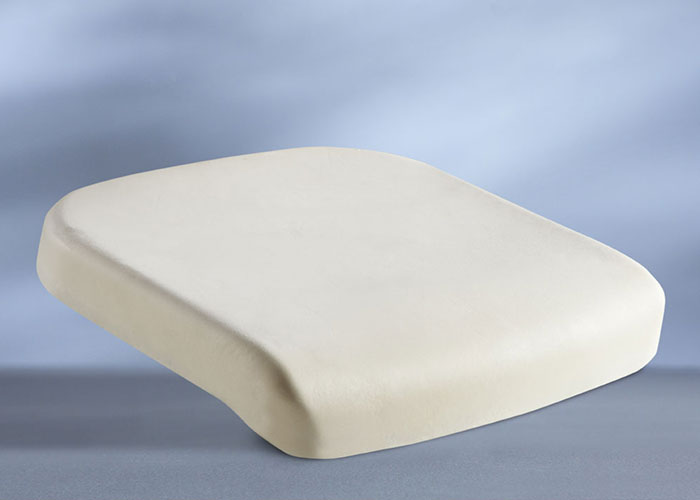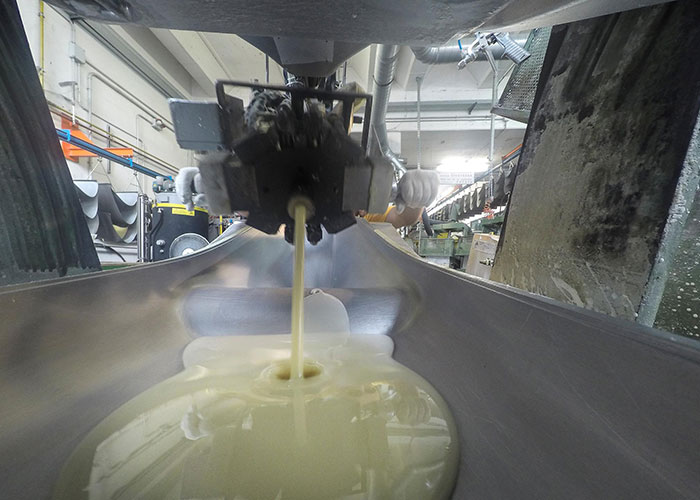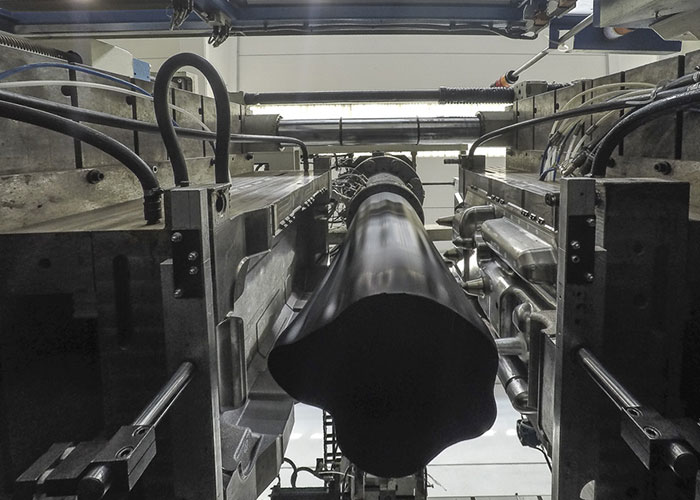The polyurethane foam moulding is one of the core proficiencies at Fisem. When speaking about the moulding of polyurethane foam, it is necessary to introduce a series of basic concepts to facilitate the understanding of its benefits and its associated areas of application.
What the moulding of polyurethane is
The moulding of polyurethane is an industrial production process centred in a polymer, which is the result of the exothermic reaction obtained from the addition of two base elements, polyol and isocyanate, performed for the first time in 1937 by Dr. Otto Bayer. The two substances are mixed in a foaming machine where the two combine and react, developing a foam that solidifies once injected into a thermoregulated mould.
The polyurethane is extremely versatile and is therefore fundamental for the industrialization of a wide range of products with certain characteristics depending on the different uses and fields of application. The world market of polyurethane involves primarily the automotive sector, railways, professional and consumer electronics, furniture, construction, refrigeration, paints and adhesives.
The types of polyurethane
The polyurethane can be classified in several types, which have characteristics and different applications:
- Integral polyurethane is a flexible material, compact and resistant to deterioration at the same time, its aesthetics is smooth or embossed fitting customer request, and it is exploited as a component for the automotive industry, furnishing, sport articles and in all those applications that need the combination of softness-mechanical resistance.
- Flexible polyurethane foam, material whose consistency is soft, is used for the production of furniture, car seats, seats for bikes, mattresses and more.
- The semirigid polyurethane is printed with R.I.M. Technology (Reaction Injection Moulding) and being a semi-rigid material with a high mechanical resistance, is ideal for the manufacture of industrial components and bumpers, panels, bodywork parts for the automotive industry and transport.
- The rigid polyurethane is a high-density material used to produce very strong and robust articles, for the filling of the cavity or for facilities that require a good thermal and acoustic insulation.
The moulding of polyurethane foam: a technology in continuous evolution
Polyurethane moulding is a type of polyurethane transformation process and has always been a technology in continuous evolution both considering the methodologies and the devices: after its success during the post-war period in the building construction, there was the need to improve the potential of this process. In the mid-fifties it was introduced to the production of pieces of upholstered furniture, operation justified by the characteristics of the polymer itself, which contains a high percentage of air in its own volume.
Why polyurethane moulding
The moulding process of the polyurethane foam has some advantageous characteristics.
- It offers competitive costs compared to other technologies, mostly due to cheaper equipment and reduced times.
- It meets the needs of customers by offering different solutions, thanks to the adaptability of the material.
- It enables the making of large objects of particular and complex shapes, also by employing different materials.
- Due to the excellent mechanical characteristics, it allows the products to have very long-life cycles, with economic and environmental benefits.
- Finally, the polyurethane foam is readily recyclable: in fact, new physical and chemical recycling systems and energy recovery methods are currently being developed.

The excellence Fisem holds in the moulding of polyurethane foam has originated from its experience and competence, and its technicians are approachable to assess projects and building solutions to support customers achievements.


